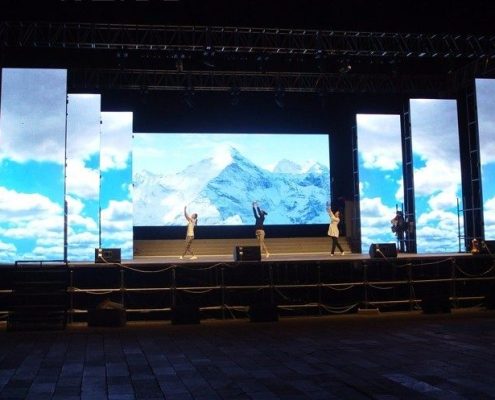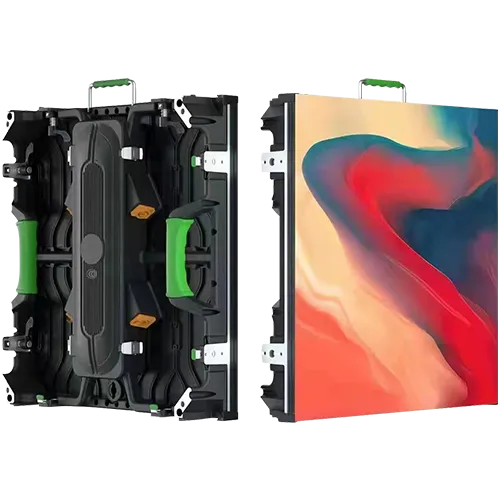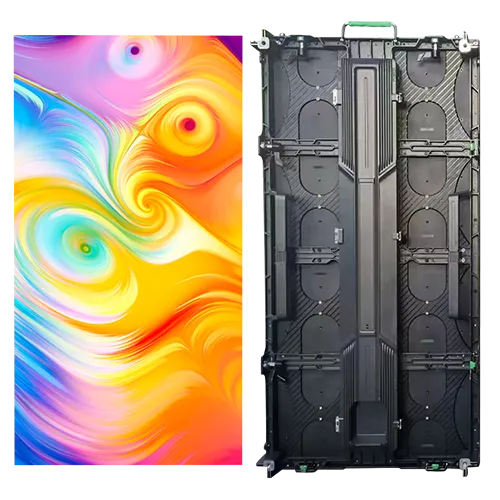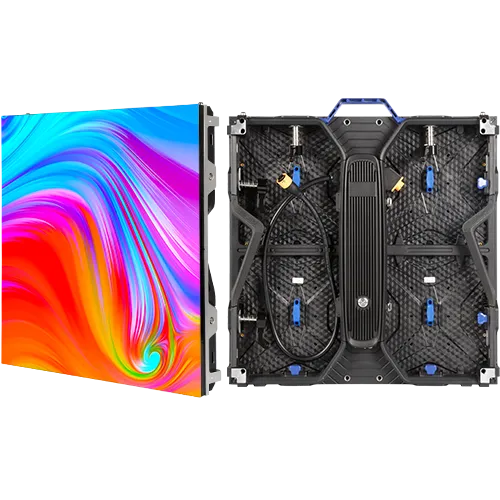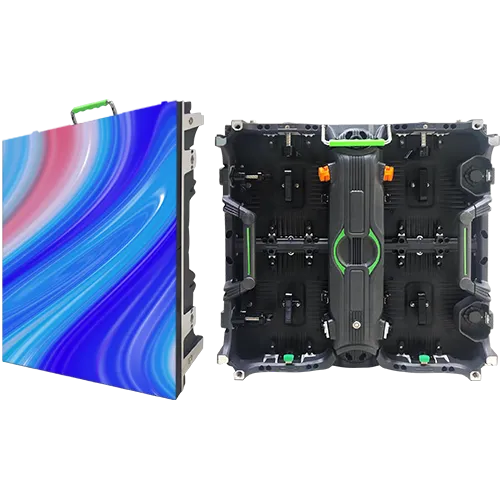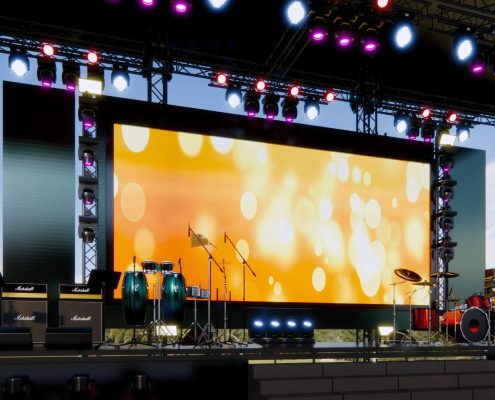Online Consultation or Need a Quote?
In recent years, the event industry has witnessed a significant transformation, largely attributed to the advent and increasing popularity of LED screens. These dynamic displays, known as LED Screens for Events, have become pivotal in enhancing the visual experience at various gatherings, from corporate conferences to music festivals. Their ability to deliver vibrant colors, high-definition images, and seamless video playback makes them an indispensable tool in the arsenal of event planners and organizers. As we delve deeper into the world of events, the importance of LED screens becomes increasingly evident. They not only captivate audiences with their stunning visuals but also offer the flexibility to adapt to different settings and themes. Whether it’s an outdoor concert requiring robust, weather-resistant screens or a sophisticated corporate gala needing high-resolution displays, LED screens have proven their versatility and effectiveness. This growing trend underscores the shift towards more immersive and interactive event experiences, where LED screens play a central role in engaging and mesmerizing attendees.
What are LED Screens for Events?
The term LED Screens for Events refers to a sophisticated display technology that has revolutionized the way visuals are presented in various event settings. At its core, an LED screen is made up of Light Emitting Diodes (LEDs), which are tiny light sources that illuminate to form images. This technology differs significantly from traditional display methods, such as LCD or projection screens, primarily in its brightness, clarity, and energy efficiency.
LED screens for events offer unparalleled vibrancy and clarity, making them ideal for both indoor and outdoor settings. Unlike traditional methods that may struggle with direct sunlight or dim lighting, LED screens maintain consistent visibility and color accuracy. This is due to the individual nature of the LEDs, which emit their own light, providing a brighter and more vivid picture.
Another key distinction lies in the flexibility of LED screens. They can be customized into various sizes and shapes, catering to the specific needs of different events. Whether it’s a large outdoor concert requiring a massive screen or a corporate seminar needing a smaller, more refined display, LED technology can adapt seamlessly. This adaptability extends to the content displayed as well, from live feeds and interactive presentations to pre-recorded videos and graphics.
Understanding LED screens for events involves recognizing their technological superiority over traditional display methods. Their ability to deliver high-quality visuals in various environments, coupled with their customization options, makes them an essential component in modern event planning and execution.
Types of LED Screens for Events
Outdoor LED Screens for Events
When it comes to enhancing the vibrancy and engagement of outdoor events, Outdoor LED Screens for Events stand out as a game-changing technology. These screens are specifically designed to withstand various outdoor conditions, making them a robust and versatile choice for any event held outside.
Characteristics and Advantages
High Brightness and Visibility: Outdoor LED screens are engineered to offer superior brightness, which is crucial for daytime events under direct sunlight. Their high luminosity ensures that the displayed content remains clear and vibrant, regardless of the ambient light conditions.
Durability and Weather Resistance: These screens are built to endure harsh outdoor elements, including rain, wind, and extreme temperatures. They come with protective measures like waterproofing and dust resistance, ensuring long-term reliability and performance.
Energy Efficiency: Despite their high brightness, outdoor LED screens are surprisingly energy-efficient. This makes them not only environmentally friendly but also cost-effective in terms of electricity consumption.
Wide Viewing Angles: Outdoor LED screens provide broad viewing angles, ensuring that the content is visible from different perspectives, which is essential in large, open spaces.
Suitability for Different Outdoor Events
Concerts and Festivals: For live music events, outdoor LED screens can magnify the stage action, ensuring that attendees, even those at the back, have a clear view of the performances.
Sporting Events: In stadiums and sports arenas, these screens can display live action, replays, and scores, enhancing the spectator experience.
Corporate Events and Conferences: For outdoor business gatherings, LED screens offer a professional and dynamic way to present information and engage with the audience.
Public Gatherings and Festivals: Whether it’s a cultural festival or a public rally, outdoor LED screens can be used to broadcast messages, display live feeds, or showcase multimedia presentations.
Outdoor LED Screens for Events are not just a display tool; they are an integral part of the event experience. Their ability to deliver high-quality visuals in challenging outdoor environments makes them an indispensable asset for any event planner looking to create a memorable and engaging outdoor event.
Large LED Screens for Events
The use of Large LED Screens for Events has become increasingly popular, providing a visually stunning and immersive experience for attendees. These large-scale screens play a crucial role in enhancing audience engagement and transforming the event atmosphere.
Impact on Audience Engagement
Enhanced Visibility: Large LED screens ensure that every attendee, regardless of their location in the venue, has a clear and unobstructed view of the content being displayed. This is particularly important in large venues where visibility can be a challenge.
Immersive Experience: The sheer size of these screens creates an immersive environment that captivates the audience. Whether it’s displaying high-definition videos or live feeds, large LED screens make attendees feel more connected to the event.
Interactive Opportunities: Many large LED screens come with interactive capabilities, allowing for real-time audience participation. This can include social media integrations, live polling, or interactive games, which significantly enhance audience engagement.
Effectiveness in Various Events
Concerts and Music Festivals: In these settings, large LED screens are essential for showcasing live performances, ensuring that every audience member gets a ‘front-row’ experience, regardless of their actual distance from the stage.
Sporting Events: Large screens in stadiums and arenas bring fans closer to the action, displaying instant replays, close-ups of athletes, and live statistics, thereby enhancing the overall spectator experience.
Conferences and Corporate Events: For events that involve presentations, large LED screens are effective in displaying detailed content, such as graphs and videos, ensuring that it is visible to all attendees.
Outdoor Public Events: In events like parades, public rallies, or outdoor screenings, large LED screens serve as focal points, broadcasting live events and information to large crowds.
Large LED Screens for Events are not just tools for display; they are central to creating an engaging and memorable event. Their ability to deliver high-quality, large-scale visuals makes them an indispensable element in modern event planning, suitable for a wide range of event types and settings.
Digital LED Screens for Events
The integration of Digital Screens for Events has revolutionized the way we experience gatherings and celebrations. These advanced screens, often incorporating LED technology, have become a staple in creating dynamic and engaging environments for various events.
Enhancing Event Experiences
Dynamic Content Display: Digital screens offer unparalleled flexibility in content display. From high-resolution videos and live streaming to dynamic graphics and text, they can adapt to the specific needs of each event, providing a tailored visual experience.
Interactive Features: Many digital screens now come with interactive capabilities, allowing for audience participation. This can range from touch-screen information kiosks at corporate events to live social media feeds at concerts, adding an interactive layer to the event experience.
Seamless Integration: Digital screens can be seamlessly integrated into the event’s theme and design. Whether it’s a minimalist look for a corporate event or a vibrant display for a festival, these screens can enhance the overall aesthetic and atmosphere.
Comparison with Traditional Display Methods
Brightness and Clarity: Unlike traditional projectors or banner displays, digital screens offer superior brightness and clarity, making them visible even in well-lit conditions or from a distance.
Flexibility in Size and Shape: Digital screens, especially those using LED technology, can be customized in various sizes and shapes, unlike traditional displays which are often limited in these aspects.
Energy Efficiency: Modern digital screens are more energy-efficient compared to older display technologies, making them a more sustainable choice for events.
Ease of Setup and Maintenance: Digital screens are generally easier to set up and require less maintenance than traditional methods, which often involve complex setups and can be prone to technical issues.
Digital Screens for Events offer a modern, versatile, and efficient way of presenting visual content. Their ability to deliver high-quality, customizable, and interactive displays makes them superior to traditional display methods, thereby significantly enhancing the overall experience of various events.
LED Screens for Events and Panels
In the realm of LED Screens for Events, LED display panels and screens stand out as versatile and innovative solutions, catering to a wide range of event needs. These displays are fundamental in creating visually captivating environments, essential for modern event experiences.
Overview of LED Display Panels and Screens
Technology and Composition: LED display panels and screens consist of numerous small LEDs (Light Emitting Diodes) arranged in a matrix. Each LED functions as a pixel, contributing to the overall image or video displayed. This technology allows for high brightness and contrast, making the screens suitable for both indoor and outdoor events.
Variety in Sizes and Resolutions: These panels and screens come in various sizes and resolutions, from small, high-resolution screens ideal for intimate gatherings to large, expansive panels designed for concerts or festivals. The resolution can range from standard definition to ultra-high-definition (4K or even 8K), depending on the event’s requirements.
Design Flexibility: LED panels can be flat or curved, offering creative flexibility in design. This adaptability makes them suitable for unique stage designs, immersive installations, or even unconventional event spaces.
Customization Options for Different Event Needs
Modular Design: One of the key features of LED display panels and screens is their modular design. This allows event planners to customize the size and shape of the display according to the specific requirements of the event space.
Content Customization: LED screens are capable of displaying a wide range of content types, from live video feeds and pre-recorded videos to dynamic graphics and text. This versatility enables event organizers to tailor the content to match the theme and purpose of the event.
Interactive Capabilities: Many modern LED screens come equipped with interactive features, such as touch-screen interfaces or integration with social media platforms. This interactivity can enhance audience engagement, making events more interactive and memorable.
Ease of Integration: LED display panels and screens can be easily integrated with other event technologies, such as sound systems, lighting, and special effects, creating a cohesive and immersive experience for attendees.
LED Display Panels and Screens are a crucial component in the toolkit of LED Screens for Events. Their technological sophistication, combined with their customization and interactive capabilities, makes them an ideal choice for enhancing the visual appeal and engagement of a wide range of events.
LED Screens for Events Pricing and Selection
LED Screens for Events Price
Understanding the pricing of LED Screens for Events is crucial for event planners and organizers. The cost of these screens can vary widely, influenced by several key factors. Knowing these can help in making informed decisions about budgeting for LED screen rentals or purchases.
Factors Influencing the Price
Screen Size and Resolution: Larger screens with higher resolutions typically cost more. The price increases with the screen’s physical size and the number of pixels per inch, as higher resolutions require more LEDs and more intricate manufacturing processes.
Indoor vs. Outdoor Usage: Outdoor LED screens, which need to be weather-resistant and brighter, can be more expensive than indoor models. The additional protective features against elements like rain, wind, and sunlight add to the cost.
Customization and Complexity: Custom shapes, sizes, or unique features like curved panels increase the price. The more customized the screen, the higher the cost due to the additional engineering and manufacturing efforts.
Technology and Features: Advanced features such as interactive capabilities, higher refresh rates, and superior color accuracy can drive up the price. The latest technology in LED screens often commands a premium.
Brand and Quality: Established brands with a reputation for quality and reliability might offer their products at higher prices. However, investing in a reputable brand can mean better performance and longevity.
Tips on Budgeting for LED Screen Rentals or Purchases
Assess Event Needs: Clearly define what you need the LED screen for and what size and features are necessary. Avoid paying for extra features that won’t be utilized.
Get Multiple Quotes: Shop around and get quotes from different suppliers to compare prices and options.
Consider Renting vs. Buying: For one-time events or infrequent use, renting may be more cost-effective. For regular events, purchasing might be a better long-term investment.
Plan for Additional Costs: Remember to include costs for installation, operation, and any additional equipment in the budget.
Negotiate with Suppliers: Don’t hesitate to negotiate prices, especially for larger orders or long-term rental agreements.
The price of LED Screens for Events can vary based on several factors, and understanding these can help in effective budgeting. Whether renting or purchasing, it’s important to balance cost with quality and the specific needs of the event to ensure a successful visual experience.
LED Screens for Events Panel Price
When planning for LED Screens for Events, understanding the pricing structure of LED screen panels is essential. The cost of these panels is a significant part of the overall budget for LED screens at events, and it varies based on several factors.
Breakdown of Costs Associated with LED Screen Panels
Panel Size and Resolution: The price of LED screen panels increases with size and resolution. Larger panels with higher pixel density, which provide clearer and more detailed images, are more expensive.
Type of LED Technology: Different types of LEDs (such as SMD or DIP) have varying costs. SMD LEDs, commonly used for high-resolution screens, might be pricier than DIP LEDs, which are often used for larger, less detailed displays.
Quality and Durability: Higher quality panels that offer better color accuracy, brightness, and longer lifespans come at a higher cost. Panels designed for outdoor use with weather-resistant features also tend to be more expensive.
Additional Features: Features like wireless connectivity, integrated processing capabilities, and advanced calibration can add to the cost.
Manufacturer and Brand: Established brands with proven track records in quality and reliability often price their panels higher than lesser-known manufacturers.
Considerations for Purchasing Versus Renting
Frequency of Use: For frequent events, purchasing may be more cost-effective in the long run. For one-off events or occasional use, renting could be a more budget-friendly option.
Initial Investment vs. Ongoing Costs: Purchasing LED screen panels requires a higher initial investment, while renting can spread the cost over time. However, ownership eliminates recurring rental fees.
Maintenance and Storage: Owning LED panels means taking responsibility for their maintenance and storage, which can incur additional costs. Renting transfers these responsibilities to the rental company.
Technology Upgrades: Technology in the LED industry evolves rapidly. Renting allows for using the latest technology without the commitment of a purchase.
Customization Needs: If specific, custom-sized panels are required for unique event spaces, purchasing might be the only viable option.
The price of LED screen panels for events can vary widely based on size, technology, quality, and additional features. Event planners should carefully weigh the pros and cons of purchasing versus renting, considering factors like frequency of use, budget constraints, and the need for the latest technology. Understanding these aspects will help in making informed decisions that align with the specific needs and financial considerations of the event.
Choosing the Best LED Screens for Events
Selecting the ideal LED Screens for Events is a critical decision that can significantly impact the success of any event. The best choice depends on various factors, including the type of event, venue, audience size, and specific visual requirements. Understanding these criteria and knowing which brands and models are reliable can guide you in making an informed choice.
Criteria for Selecting the Best LED Screens Based on Event Type
Event Type and Purpose: The nature of the event plays a crucial role in determining the type of LED screen needed. For instance, concerts and festivals might require large, high-brightness outdoor screens for better visibility, whereas corporate events might benefit from indoor screens with higher resolution for detailed presentations.
Venue Size and Viewing Distance: The size of the venue and the distance from which the audience will view the screen should guide the size and pixel pitch of the LED screen. Larger venues with greater viewing distances require screens with larger pixel pitches to ensure visibility, while smaller venues can use screens with finer pixel pitches for detailed imagery.
Indoor vs. Outdoor: Outdoor events require LED screens that are robust, weather-resistant, and offer higher brightness to compete with natural light. Indoor events, on the other hand, can utilize screens with more precise color accuracy and higher resolution.
Content Type: The type of content to be displayed (live video, graphics, text, etc.) also influences the choice. High-motion content, like live sports, benefits from screens with higher refresh rates to avoid motion blur.
Recommendations for Reliable Brands and Models
Established Brands: Opt for well-known brands in the LED screen industry, as they are more likely to offer quality, durability, and good after-sales support. Brands like Samsung, LG, and Sony are known for their high-quality displays.
Model Specifications: Look for models that offer the right balance of resolution, brightness, and contrast ratio suitable for your event’s needs. For instance, models with a high refresh rate are preferable for events with fast-paced video content.
Customer Reviews and Case Studies: Research customer reviews and case studies to understand the performance of different models in real-world scenarios. This can provide insights into the reliability and effectiveness of the screens in various event settings.
Warranty and Support: Choose models that come with a comprehensive warranty and reliable customer support. This ensures that any issues can be promptly addressed, reducing the risk of screen downtime during events.
Budget Considerations: While it’s important to choose high-quality screens, it’s also crucial to consider your budget. Weigh the cost against the features and benefits each model offers to find the best value for your investment.
Choosing the best LED Screens for Events requires careful consideration of the event type, venue, content, and brand reliability. By evaluating these factors and researching available options, event planners and organizers can select LED screens that will enhance the event experience and leave a lasting impression on the audience.
FAQs about LED Screens for Events
How much do LED walls cost?
The cost of LED walls can vary significantly based on several factors. Generally, prices can range from a few thousand dollars for smaller, simpler setups to over $100,000 for large, high-resolution displays. Key factors influencing the cost include the size of the wall, pixel pitch (resolution), quality of the components, whether it’s for indoor or outdoor use, and the complexity of the installation. For instance, a high-resolution LED wall for a corporate event or a concert will be more expensive due to its larger size and higher pixel density. Additionally, costs can also include installation, maintenance, and any necessary software for operating the wall. It’s advisable to get quotes from multiple suppliers to understand the pricing better and to find an option that fits your specific needs and budget.
What are the disadvantages of LED screens?
While LED screens offer many advantages, they also have some drawbacks. Firstly, they can be quite expensive, both in terms of initial investment and maintenance. The higher the resolution and quality, the higher the cost. Secondly, LED screens can be energy-intensive, especially larger panels or those with high brightness levels. Another disadvantage is their susceptibility to damage; LEDs can be sensitive to rough handling, and repairs can be costly. Additionally, for outdoor LED screens, weather conditions like extreme temperatures and humidity can affect performance. Lastly, the quality of LED screens can vary significantly between manufacturers, which means careful selection is necessary to ensure good color accuracy and lifespan.
What kind of screens are used in concerts?
In concerts, the most commonly used screens are large LED walls or video walls. These screens are preferred for their ability to produce bright, vibrant images that are visible even in outdoor daylight conditions. LED screens are also favored for their flexibility in size and shape, allowing them to be customized to fit various stage designs and settings. They can display live feeds of the performance, close-up shots of the artists, and creative visual effects that enhance the overall concert experience. Additionally, LED screens have a high refresh rate, which is crucial for displaying fast-moving content without blurring, making them ideal for the dynamic environment of concerts.
What is an LED screen called?
An LED screen is often referred to as an LED display or LED panel. In specific contexts, such as large public events or sports stadiums, they are commonly known as Jumbotrons, a term originally trademarked by Sony but has since become a generic term for large outdoor LED screens. In the context of advertising or digital signage, they are sometimes called LED billboards or digital billboards. The term LED video wall is also used, especially when referring to a large screen made up of several smaller LED panels or tiles, which work together to form a single, seamless display. These various names all refer to the technology of using Light Emitting Diodes (LEDs) to create a visual display.
CONTACT US
Consult with Our Free Advisor for Your Next Project!

